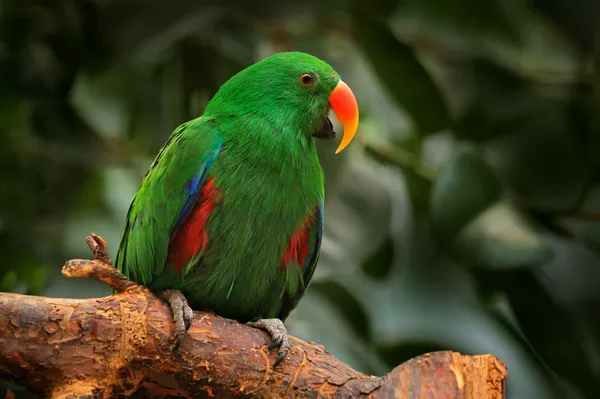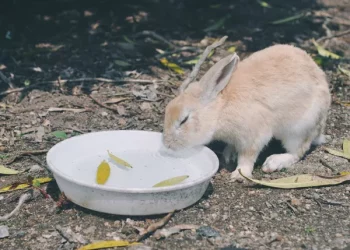African spur tortoises, also known as Geochelone sulcata, are one of the largest tortoise species in the world, known for their distinct, spiny, and high-domed shells. Native to the semi-arid regions of the Sahara Desert in Africa, these reptiles are herbivores that thrive in environments with low rainfall, hot temperatures, and an abundance of grasses. Understanding their dietary needs is crucial for ensuring their health and well-being in both wild and captive settings.
In this article, we will explore the primary components of an African spur tortoise’s diet, the specific types of food they prefer, the nutritional requirements that support their growth and longevity, and how to best care for them as pets.
Introduction to the African Spur Tortoise
The African spur tortoise is a member of the family Testudinidae and is commonly found in regions ranging from southern Tunisia, Libya, and Chad to the Horn of Africa. As one of the largest tortoises, it can grow up to 30 inches in length and weigh more than 100 pounds when fully grown. These tortoises have a lifespan that can extend well beyond 50 years, sometimes even approaching 100 years.
While they are terrestrial and spend most of their time on land, African spur tortoises are adapted to dry, hot environments and can tolerate extreme temperatures. Their diet reflects the conditions of their natural habitat, where they are predominantly grazing animals. However, the diet of an African spur tortoise is not just about eating—what they consume directly impacts their overall health, shell condition, and ability to thrive in captivity.
What Makes African Spur Tortoises Herbivores?
As herbivores, African spur tortoises primarily consume plants. This includes grasses, weeds, flowers, and leaves, which provide the necessary nutrients to sustain them. Their digestion is specialized to break down fibrous plant material, allowing them to obtain the essential vitamins, minerals, and hydration they need.
In their natural habitat, these tortoises feed on a variety of plant species that grow abundantly in the wild. The rich fiber content found in grasses and certain succulent plants plays an important role in maintaining the health of their digestive system. Furthermore, the nutritional balance of their diet helps support the growth of their large, thick shells and bones, which are vital for their protection and survival.
The Primary Components of an African Spur Tortoise’s Diet
When caring for an African spur tortoise in captivity, it is crucial to provide a diet that mimics what they would eat in the wild. Their nutritional needs can be broken down into several key components:
1. Grasses and Hay
Grasses form the backbone of an African spur tortoise’s diet, both in the wild and in captivity. Wild tortoises graze on a variety of grass species that grow in their arid environment. Some of the most common grasses consumed include Bermuda grass, ryegrass, timothy hay, and wheatgrass.
In captivity, offering high-quality grass hay such as timothy hay or orchard grass is essential for providing the fiber necessary for digestion. Fiber-rich grasses help to maintain gastrointestinal health and prevent common issues like constipation or impaction. Hay is also an excellent source of roughage, which supports the tortoise’s overall well-being by aiding in the proper function of their digestive system.
Providing fresh grasses is essential, but it’s equally important to ensure that the grasses are free from pesticides, herbicides, or other harmful chemicals, which could pose a significant risk to their health.
2. Weeds and Leafy Greens
In addition to grasses, African spur tortoises enjoy a variety of weeds and leafy green vegetables. These provide vital vitamins, minerals, and other nutrients that help keep them healthy. Common weeds that are safe for tortoises to eat include dandelions, clover, plantain, and mallow. These weeds are naturally high in calcium and other essential nutrients that support healthy bone and shell development.
Leafy greens like collard greens, mustard greens, and turnip greens are excellent choices for tortoises as well. They are rich in vitamins such as vitamin A, vitamin C, and calcium. However, certain leafy greens such as spinach should be given sparingly due to their high oxalate content, which can interfere with calcium absorption.
Another suitable option is dandelion greens, which are especially high in calcium and can promote a healthy shell. However, it’s important to avoid giving too many high-oxalate greens, as they can lead to kidney problems or calcium deficiencies over time.
3. Cacti and Succulent Plants
African spur tortoises are known to consume cacti and succulent plants in their native habitat. These plants are an excellent source of moisture, which is essential for hydration, particularly in environments where water may be scarce. Succulent plants such as prickly pear cactus are rich in fiber and water content, making them a nutritious and hydrating food source for tortoises.
When offering cacti or succulents to a pet tortoise, make sure to remove the spines, as they can cause injury. These plants can also be fed alongside leafy greens and grasses to add variety to their diet and provide additional hydration.
4. Flowers
Tortoises in the wild often feed on flowers and edible blooms. Flowers add variety and color to their diet, and many are nutrient-dense, providing additional vitamins and minerals. Common flowers that are safe for tortoises to eat include hibiscus, dandelions, and nasturtiums.
These flowers are packed with antioxidants, which can promote overall health and help fight off diseases. Additionally, flowers are a good source of fiber, which supports proper digestion and helps prevent gastrointestinal problems.
5. Fruits (in Moderation)
While African spur tortoises are primarily herbivorous, they may occasionally consume fruits in the wild. Fruits provide an important source of natural sugars, vitamins, and hydration. However, because tortoises in their native habitats typically do not consume large quantities of fruit, fruits should be offered sparingly.
Some fruits that are safe for African spur tortoises to eat in moderation include strawberries, papaya, melons, and apples. These fruits should be chopped into small, manageable pieces and served as occasional treats rather than a regular part of the diet. Overfeeding fruit can lead to digestive issues or obesity.
6. Calcium and Vitamin Supplements
Because African spur tortoises require a high level of calcium for shell development and overall health, providing calcium supplements is essential. In the wild, tortoises get a substantial amount of calcium from their natural diet, particularly from calcium-rich plants. However, in captivity, it is often necessary to supplement their diet with calcium powder.
A calcium supplement should be sprinkled on the tortoise’s food a few times a week, especially for young tortoises and those that are growing. It’s also important to offer a cuttlebone or calcium block as an additional source of calcium. This can help prevent metabolic bone disease, a condition that occurs due to calcium deficiency.
Vitamin D3 is also essential for proper calcium absorption. Most tortoises will synthesize vitamin D3 through exposure to UVB light, so it is vital to provide appropriate lighting in their habitat.
Foods to Avoid
While African spur tortoises have a broad diet, there are certain foods that should be avoided entirely. These foods can be harmful and may cause illness or even death if consumed in excess. Some of the foods to avoid include:
Iceberg lettuce: It has very little nutritional value and can lead to diarrhea or malnutrition.
Cabbage: When fed in excess, cabbage can interfere with thyroid function.
Potatoes: These are not part of a tortoise’s natural diet and can cause digestive issues.
Tomatoes: While not toxic in small quantities, tomatoes contain a chemical called solanine, which can cause problems if eaten in large amounts.
Avocados: These are toxic to many reptiles, including tortoises, and can cause heart damage.
High-oxalate foods: As mentioned, foods such as spinach and chard should be fed sparingly due to their ability to bind calcium and prevent its absorption.
Hydration and Water Needs
Hydration is another crucial aspect of an African spur tortoise’s diet. While they get some moisture from the plants they eat, it is essential to provide fresh, clean water at all times. Tortoises may not always drink from a water bowl but should be provided with one to encourage drinking.
Occasionally, tortoises may also need a soak to help maintain hydration. This is particularly important if the tortoise is in a dry environment or showing signs of dehydration, such as a dry, flaky skin appearance or lethargy. Soaking the tortoise in warm water for 20-30 minutes can help with rehydration.
Conclusion
Caring for an African spur tortoise involves more than just providing the right enclosure and lighting—it also requires feeding them a balanced and nutritious diet that supports their growth, longevity, and overall well-being. A diet rich in grasses, hay, leafy greens, weeds, cacti, and occasional fruits will help keep your tortoise healthy and thriving. Avoiding harmful foods and ensuring they receive adequate hydration and calcium supplements will further promote their health and prevent common health problems.
By understanding the natural dietary habits of African spur tortoises and providing them with the right foods, owners can help ensure that these remarkable creatures live long, healthy lives both in the wild and in captivity.
Related Topics:





















